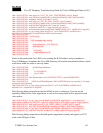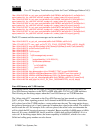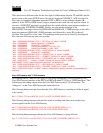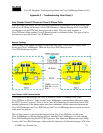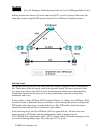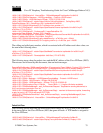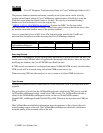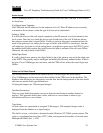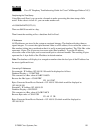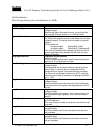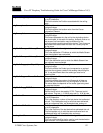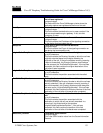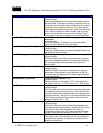
Cisco IP Telephony Troubleshooting Guide for Cisco CallManager Release 3.0(1)
© 2000 Cisco Systems, Inc. 77
Appendix D
Call Detail Records (CDRs and CMRs)
This appendix provides detailed information about Call Detail Records (CDRs) and Call
Management Records (CMRs, also known as Diagnostic CDRs).
CDR records are written to a database for use in post processing activities. These activities
include many functions but will primarily be billing and network analysis.
The database is a Microsoft SQL Server 7.0 database. Access to the database can be made via
Open DataBase Connectivity (ODBC).
Access is provided to all tables in the database in a read-only fashion, and to the CDR and CMR
tables in a read/write fashion.
To use CDR record data, you may want to read other tables in the database in an effort to obtain
information about the type of device the CDR is about. This correlation between devices in the
Device table and the IP address listed in the CDR record is not straightforward and is listed as a
known issue later in this appendix.
Writing Records
Cisco CallManager writes CDR records to the SQL database as calls are made in a manner
consistent with the configuration of each individual Cisco CallManager. This configuration is
made via the Service Parameters screen in Cisco CallManager Administration.
All records are written to the primary database for a cluster. If the primary database is not
available, then they will be written to any of the other backup databases. Once the primary
database becomes available, then writing new records will continue on the primary database and
the locally written records will be moved to the primary.
Reading Records
The easiest way to read data from the SQL database may be to use ODBC. A good connection
string would look like:
DRIVER={SQL Server};SERVER=machineX;DATABASE=CCM0300
Be sure to use the correct database name. If a Cisco CallManager Release 3.0(1) version of the
software is installed over an existing installation, then the database might be migrated if called
for by the new installation. In this case, the old database will still exist, and the new database will
also exist. The names will differ by adding one to the number of the name. For instance, the
original name is CCM0300. After a migration, the newer database name will be CCM0301. The
highest number database should be used.



